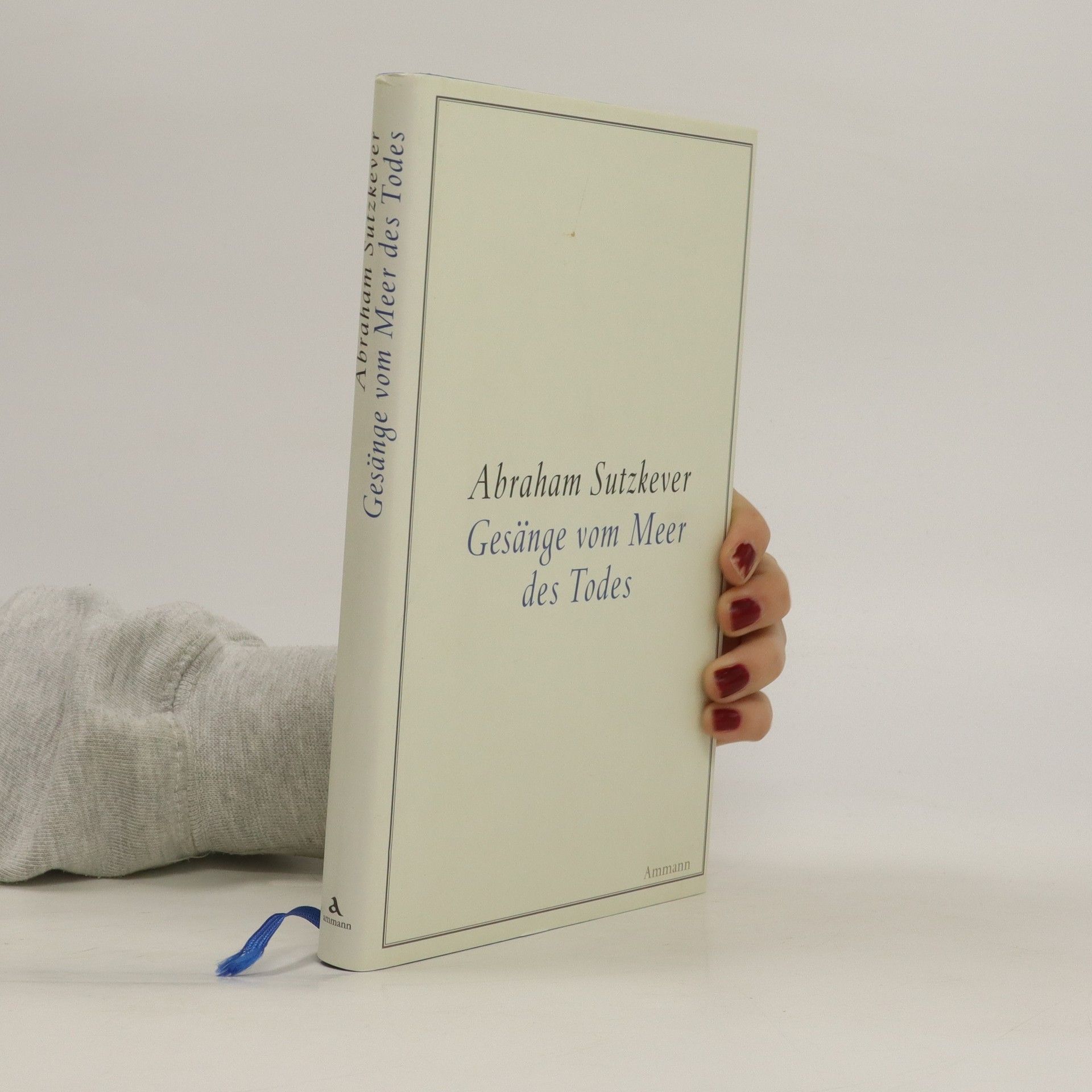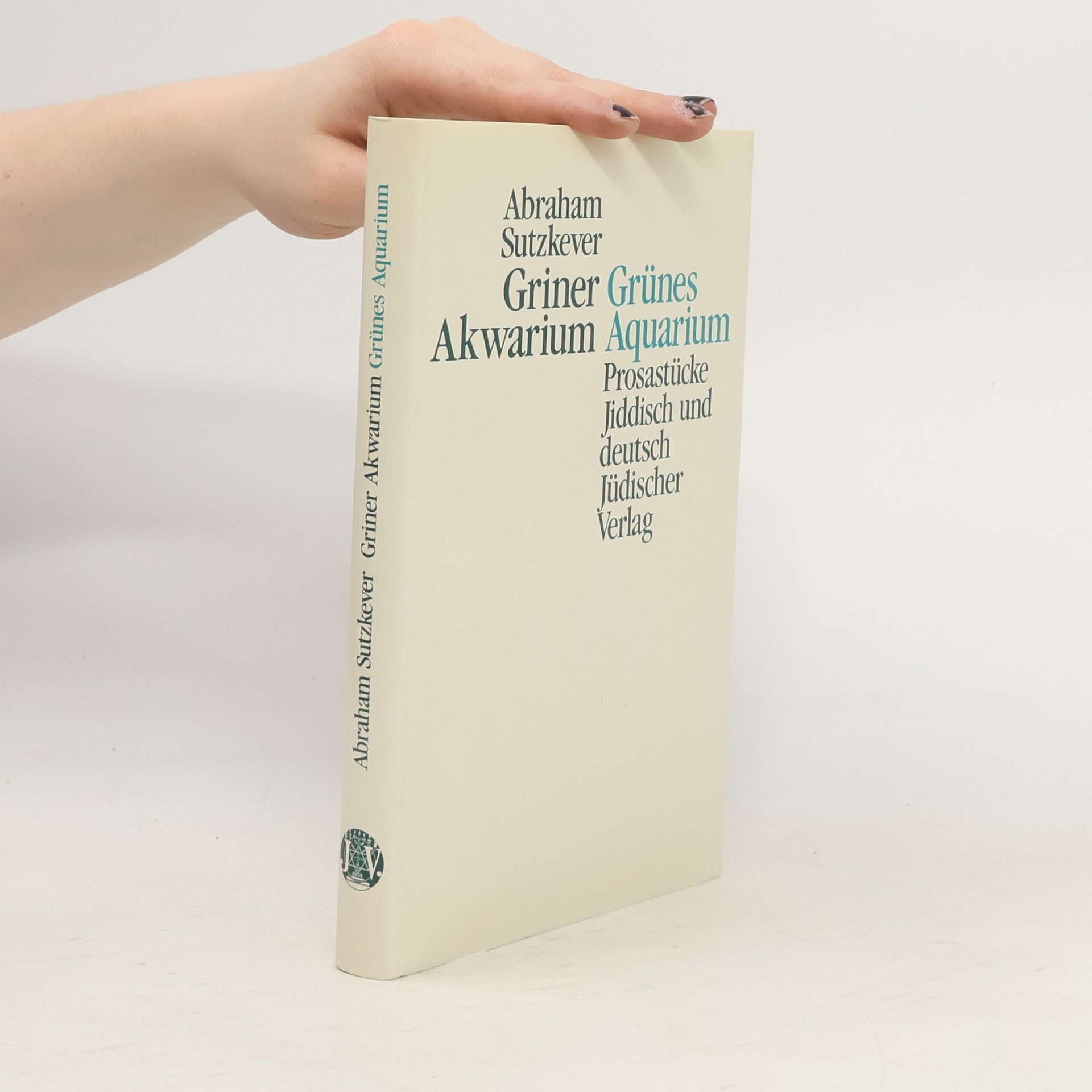Abraham Sutzkever (1913–2010) war ein bedeutender jiddischer Poet des 20. Jahrhunderts, der das Grauen des Holocaust lyrisch verarbeitete. Geboren in Litauen, erlebte er Ghettoisierung und Flucht. Seine Gedichte, geprägt von Zartheit und Phantasie, behandeln Themen wie Liebe und Tod und reflektieren die conditio humana.
Abraham Sutzkever Book order
Abraham Sutzkever was among the rare artists who survived immense devastation. As a writer, he produced some of his most profound poems between 1941 and 1945, forged during the daily miseries of ghetto life and under the constant shadow of death. These works stand as an exceptional testament in the history of art, written not in retrospect but in the crucible of immediate experience. Sutzkever demonstrated that Yiddish verse could meet the highest artistic demands. His ghetto poems are significant not only as acts of resistance but as enduring proofs of the human spirit's resilience, offering subtle power that transcends circumstance and time.






- 2024
- 2023
Ode to the Dove
A Yiddish poem by Abraham Sutzkever
Renowned as a profound voice of the Holocaust, this poet's work captures the harrowing experiences and emotions of that dark period. Through evocative language and poignant imagery, the poems delve into themes of loss, resilience, and the human spirit's capacity to endure. The collection serves as both a memorial and a testament to the struggles faced during the Holocaust, offering readers a powerful reflection on history and humanity's enduring quest for meaning amidst suffering.
- 2021
From the Vilna Ghetto to Nuremberg
- 424 pages
- 15 hours of reading
In 1944, Yiddish poet Abraham Sutzkever was airlifted to Moscow from the forest where he had spent the winter among partisan fighters. He was encouraged by Ilya Ehrenburg to write a memoir. From the Vilna Ghetto to Nuremberg returns readers to a moment when the scale of the Holocaust was first coming into focus, through the eyes of one survivor who attempted to make sense of daily life, resistance, and death in the ghetto.
- 2017
Die Reihe Jiddistik Edition und Forschung wird von Efrat Gal-Ed, Roland Gruschka und Simon Neuberg herausgegeben. In der Reihe erscheinen wissenschaftliche Studien – Sammelbände und Monografien – zu Jiddistik sowie philologische Editionen und Studienausgaben jiddischer Literatur aus allen Epochen. Die Bände werfen ein Schlaglicht auf den internationalen Diskurs und die thematische und methodologische Vielfalt jiddistischer Forschung der Gegenwart. Mit dem Fokus auf die moderne jiddische Literatur sowie die Disziplinen Literatur und Sprache des Älteren Jiddisch, Sprache und Sprachwissenschaften, Literaturwissenschaft und -theorie, Philologie, Kultur, Geschichte und Politik umfasst die Reihe ein breites inhaltliches Spektrum. Jiddisch, Englisch und Deutsch stehen als Publikationssprachen gleichberechtigt nebeneinander.
- 2009
Juli 1944. Gemeinsam mit der Roten Armee befreien jüdische Partisanen die Stadt Wilna. Nur wenige Juden haben überlebt. Kaum etwas ist geblieben vom Jerusalem des Ostens, das Wilna einmal war: eines der bedeutendsten Zentren jüdischer Kultur in Osteuropa. Einige Handschriften, Bücher, Skulpturen und Leuchter konnten vor der Zerstörung gerettet werden - in schützenden Verstecken oder vergraben im Erdboden. Abraham Sutzkevers Bericht Wilner Getto 1941-1944 ist Teil und Spur dieser Geschichte. Im Wilner Getto half der junge Dichter maßgeblich, das kulturelle Geschehen und damit die jüdische Identität am Leben zu erhalten und war damit Teil eines kulturellen Widerstands, aus dem der bewaffnete Aufstand hervorging. 1943 konnte Sutzkever aus sem Getto in die umliegenden Wälder fliehen und schloß sich den Partisanen an. Seine Aufzeichnungen, erstmals 1946 in Moskau erschienen, schildern minutiös die Ereignisse voll von Zorn und Trauer, Hoffnung und Stolz. Sie atmen das unmittelbar durchlittene Trauma. 65 Jahre nach der Befreiung des Wilner Gettos liegt dieses wichtige Dokument erstmals auf deutsch vor.
- 2009
1946 sagt Abraham Sutzkever als Zeuge bei den Nürnberger Kriegsverbrecherprozessen aus. Drei Jahre hat er im Wilner Getto die Greueltaten der Nazis und ihrer litauischen Helfer hautnah miterlebt. Sein lyrisches Werk, das in dieser Auswahl zum ersten Mal in deutscher Sprache vorliegt, ist eine poetische Zeugenaussage, mit deren Sprachgewalt Sutzkever in den Louvre der grossartigsten Dichtungen des 20. Jahrhunderts Einzug hält. In den jiddischen Versen von Abraham Sutzkever pulsieren die Emotionen in der jahrhundertealten Sprache der Träumer und Kaballisten, Märtyrer und Heiligen. Es ist eine Sprache der Weisheit und Bescheidenheit, das Idiom einer verängstigten und hoffnungsvollen Menschlichkeit – reich an Erinnerungen, die über Generationen hinweg bewahrt werden. Sutzkever erhebt diese Sprache zur höchsten Kunstform: '… Und so geschah es: / In einer Minute des Nicht-Erinnerns, / Als ich eine Kirsche zu den Lippen nahm – / Hat sich die Kirsche / In eine heiße Kohle verwandelt und Wörter gezündet.'
- 2009
Juli 1944. Gemeinsam mit der Roten Armee befreien jüdische Partisanen die Stadt Wilna. Nur wenige Juden haben überlebt. Kaum etwas ist geblieben vom 'Jerusalem des Ostens', das Wilna einmal war: eines der bedeutendsten Zentren jüdischer Kultur in Osteuropa. Einige Handschriften, Bücher, Skulpturen und Leuchter konnten vor der Zerstörung gerettet werden – in schützenden Verstecken oder vergraben im Erdboden. Abraham Sutzkevers Bericht Wilner Getto 1941–1944 ist Teil und Spur dieser Geschichte. Im Wilner Getto half der junge Dichter maßgeblich, das kulturelle Geschehen und damit die jüdische Identität am Leben zu erhalten und war damit Teil eines kulturellen Widerstands, aus dem der bewaffnete Aufstand hervorging. 1943 konnte Sutzkever aus sem Getto in die umliegenden Wälder fliehen und schloß sich den Partisanen an. Seine Aufzeichnungen, erstmals 1946 in Moskau erschienen, schildern minutiös die Ereignisse voll von Zorn und Trauer, Hoffnung und Stolz. Sie atmen das unmittelbar durchlittene Trauma. 65 Jahre nach der Befreiung des Wilner Gettos liegt dieses wichtige Dokument erstmals auf deutsch vor.
- 1992
Abraham Sutzkever ; Übersetzung, Jost G. Blum, Michael Von Killisch-horn, Mirjam Pressler ; Umschrift Und Nachwort, Jost G. Blum. Includes Bibliographical References. German And Yiddish.


